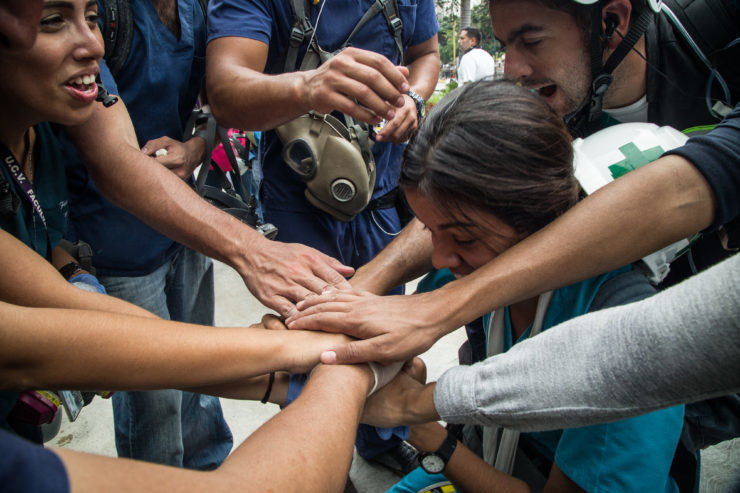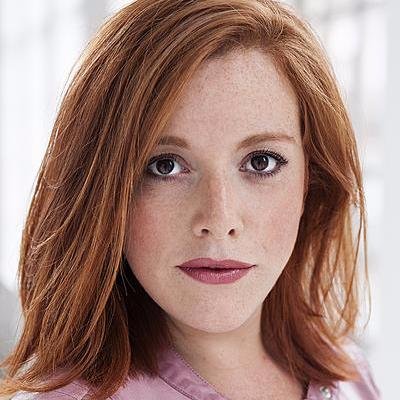
Members of Green Cross, medical students who help injured civilians, gather after the day’s protests
Venezuela is a country rich in natural resources, fertile land, and the largest oil reserves in the world—more than Saudi Arabia. Once a regional powerhouse and preferred destination for tourists, businesses, and photographers, the Latin American country can no longer feed, educate, or heal its people.
During the past three months, demonstrations against President Nicolás Maduro—elected in 2013 following the death of populist leader Hugo Chávez—have assumed dramatic proportions. As of early August, protests had been ongoing for over 100 days, leaving at least 125 dead and many more injured.
As the government is now blocking foreign correspondents from entering the country, coverage is left to native and international photojournalists who were already in Venezuela and a new generation of young and forceful visual storytellers.
“Especially during times of crisis, it is extremely important to have Venezuelan photographers, not only covering the situation for their own communities but also for their stories to be visible elsewhere,” says Fabiola Ferrero, a Venezuelan photographer whose work ranges from in-depth personal stories to frontline protest coverage.
Still, covering conflict areas has always been challenging for photojournalists, both international and local. Not having sufficient knowledge of the history and significance of what is unfolding in the country can be tricky. For instance, covering a political crisis with an exclusively aesthetic intention may be a misguided effort at narrating issues deeply affecting people’s lives and the political realities of a country. At the same time, local photographers might have the advantage of a certain degree of access as well as background knowledge about the story they are covering.
Considering that foreign correspondents have increasingly been denied entrance to Venezuela, the work of local photographers has become more and more significant: “The work of photographers has been crucial, in the sense that all the human rights violations committed by the security forces, have been covered by a big group of photographers,” says Ferrero. “If things have reached this point even when local photographers have been covering it all, I can’t imagine what would have happened to us without that type of coverage,” she says.
The role of witness and of storyteller is pivotal in such moments, as is the role of citizen journalists who, like Giovanna Mascetti, draw attention to more subtle stories, stories from the sidelines. Her work represents a visual testimony to how civil society is organizing itself and has been campaigning to bring down an authoritarian government.
Mascetti started photographing the Cruz Verde (“Green Cross”), a group of medical students who assist injured civilians during clashes with the police and National Guard. She took to the streets and followed the “Green Cross” beginning back in April of this year.
“I wasn’t very drawn to focus my work on the National Guard or on the resistance per se. I felt that the bright spirit of the ‘Green Cross’ was something that I wanted to see in the media. This is a group that embodies the young Venezuelans who want to see their country move forward, which is exactly what I wanted to portray in my work,” says Mascetti.
These images and this type of work is of great significance for those in Venezuela, and for the international community watching the country’s citizens take on Maduro’s administration. “What we’re doing and how we’re photographing will also add to a bigger sociological, anthropological, and social body of research on how the people organized themselves and took to the streets,” says Ferrero.
Photojournalists dedicated to frontline and sideline stories will indeed teach us, outsiders and Venezuelans, about Venezuela’s history. Their visual testimony will be part of the record for generations to come.


